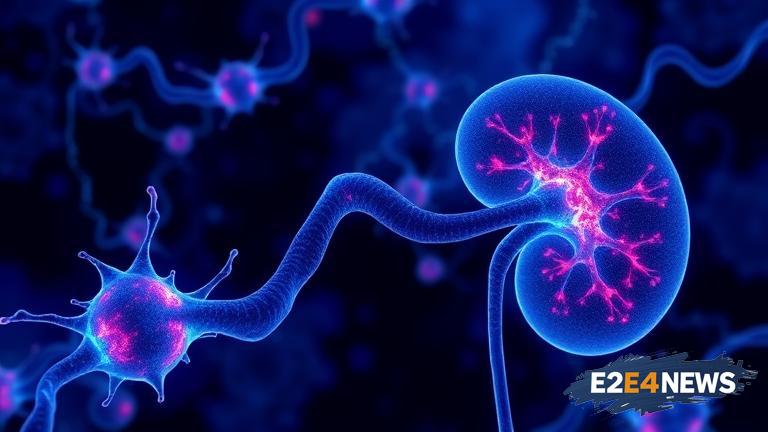Renal cell carcinoma (RCC) is a type of kidney cancer that affects thousands of people worldwide. Recently, a team of researchers has made a significant discovery in the field of RCC, identifying a potential biomarker that could improve patient outcomes and treatment response. The biomarker, known as KIM-1 (Kidney Injury Molecule-1), has been found to be associated with the prognosis and treatment response of RCC patients. KIM-1 is a protein that is expressed in the kidneys and is involved in the regulation of cell growth and differentiation. The study, which was conducted on a large cohort of RCC patients, found that high levels of KIM-1 were associated with poor overall survival and disease-free survival. Furthermore, the researchers found that KIM-1 was also associated with the response to treatment, with patients having high levels of KIM-1 being less likely to respond to therapy. The discovery of KIM-1 as a potential biomarker for RCC has significant implications for the management of the disease. It could enable doctors to identify patients who are at high risk of poor outcomes and tailor their treatment accordingly. Additionally, KIM-1 could be used to monitor the response to treatment and adjust the therapy as needed. The researchers believe that KIM-1 could be used in combination with other biomarkers to improve the accuracy of prognosis and treatment response prediction. The study’s findings are consistent with previous research, which has shown that KIM-1 is involved in the pathogenesis of RCC. The researchers used a variety of techniques, including immunohistochemistry and quantitative real-time PCR, to measure the levels of KIM-1 in the patients’ tissues. The results of the study were validated using a separate cohort of patients, which confirmed the association between KIM-1 and poor outcomes. The discovery of KIM-1 as a potential biomarker for RCC is a significant breakthrough in the field and could lead to improved patient outcomes and treatment response. Further research is needed to fully understand the role of KIM-1 in RCC and to develop it as a clinical biomarker. The study’s findings have been published in a prestigious scientific journal and have generated significant interest in the scientific community. The researchers are hopeful that their discovery will lead to the development of new treatments and improved patient care. In conclusion, the identification of KIM-1 as a potential biomarker for RCC is a major breakthrough in the field and could have significant implications for the management of the disease.
